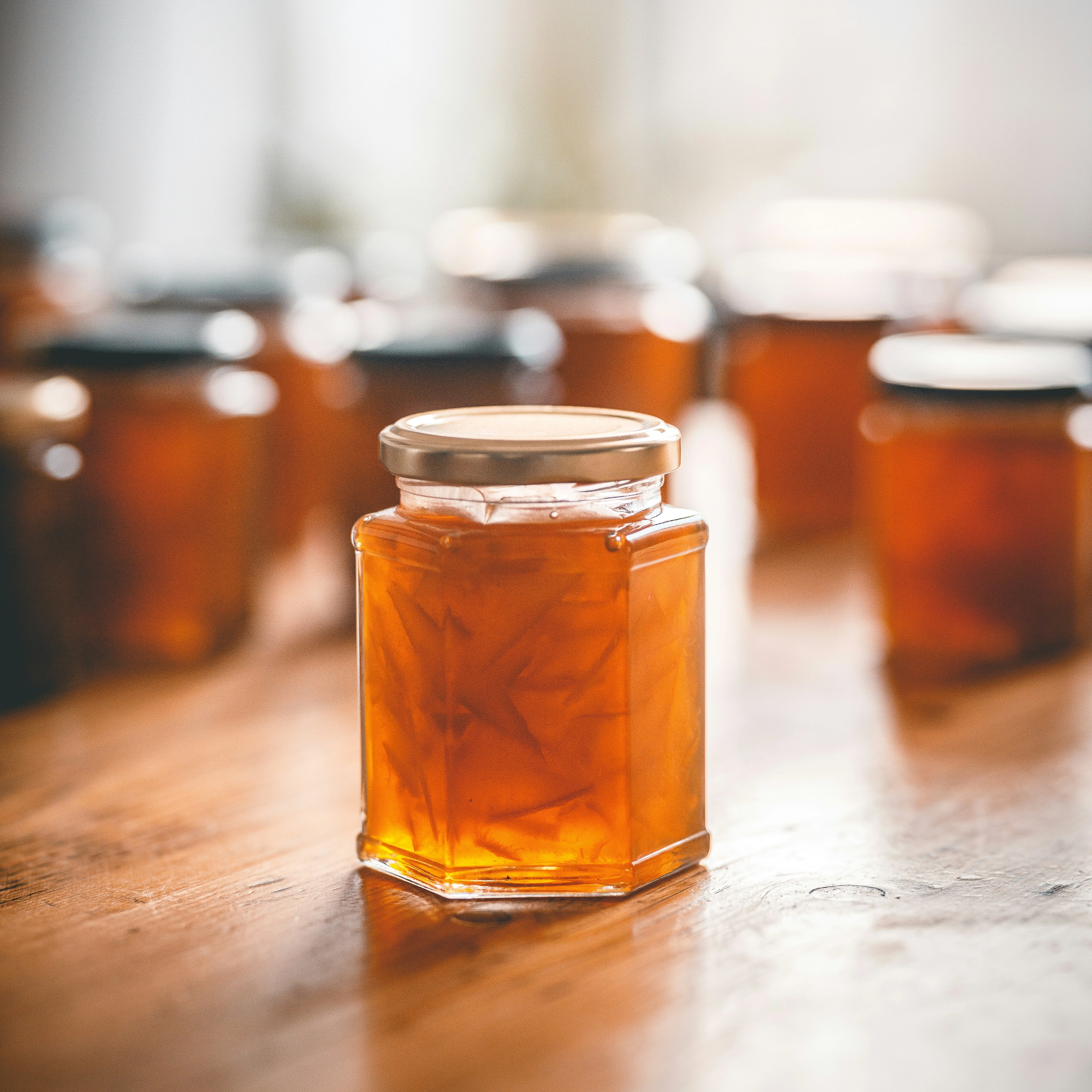Glass Canning
Consumable Preservation
Small pops echo through the kitchen as a large pot boils on the stove. As the sounds fade away, the heat is turned off, and with a gentle hand protected from the heat, the source of the sounds is pulled from the pot, set on the counter to cool and finish the process. The small number of jars pulled from the boiling water may not seem like much, but the colorful fruits within will sustain this small family when snow blankets the world in just a few months. With today's exploits finished, tomorrow's are planned. Instead of fruit, fresh vegetables will fill the hot pot, preparing for the cold months ahead.
In a building on the lake, the same process occurs, but on a much bigger scale. Industrial-size cauldrons forged by the Dwarves rest on specially made forges to handle upwards of a hundred jars at a time. On the other side of the building, a glassblower makes their signature jars, with scales and fines etched into the heavy glass to set their product apart. Fishermen bring the infamous Faefish to the dock nearby, making the time from fresh to finished and ready to travel less than a day. Without this process, the Faefish would be worth little, and the towns on Lake Idryl engrossed in their trade would be non-existent.
Glass Canning is a newer technology, but one that changes how people preserve food greatly. Before, the chosen method was salting, burying a fresh ingredient in salt for weeks or months, but this method did not work on everything. The Faefish trade was the first to benefit from such a preservation method, allowing the fish to be sealed in glass jars and transported all over the world, but even simple things like Greenwood Honey also became a favorite worldwide staple once jars became the chosen method of preservation.
Purpose
The purpose of Glass Canning is to seal fresh foods into glass jars with metal lids through a heating process. Glass jars are filled with fruits, vegetables, meats, and other foodstuffs, and then placed in a pot full of water. As the water heats and begins to boil, the jars will also heat, causing the lids to vacuum seal on the jars. This keeps the food fresh for long periods if the seal has not been broken.Discovery
The exact method of discovery is unknown as the man who discovered this technique refused to share the story behind his stroke of genius, but his methods have been shared the world over. Glass Canning is a method all can use, although some groups have created "proprietary" jar shapes that cannot be copied. The most commonly known of these specialty jars is the fish-shaped ones that Faefish are canned in.Complexity
This process is not very complex, unless done on an industrial scale. Most kitchens have the tools to seal jars, as it often only takes an open fire or stovetop, as well as a large pot that allows for jars to be submersed in boiling water. Doing this on an industrial scale is still in development, but a few groups have figured out how to can upwards of one hundred jars at a time.Canned Goods
Glass Canning is an important way to preserve food for long periods, including while shipping worldwide, without heavily salting the original food. This technology allowed freshness and taste to be locked in during the process and to remain after opening.



Such a cosy article. My wife does this with jam. :)
Explore Etrea | WorldEmber 2025